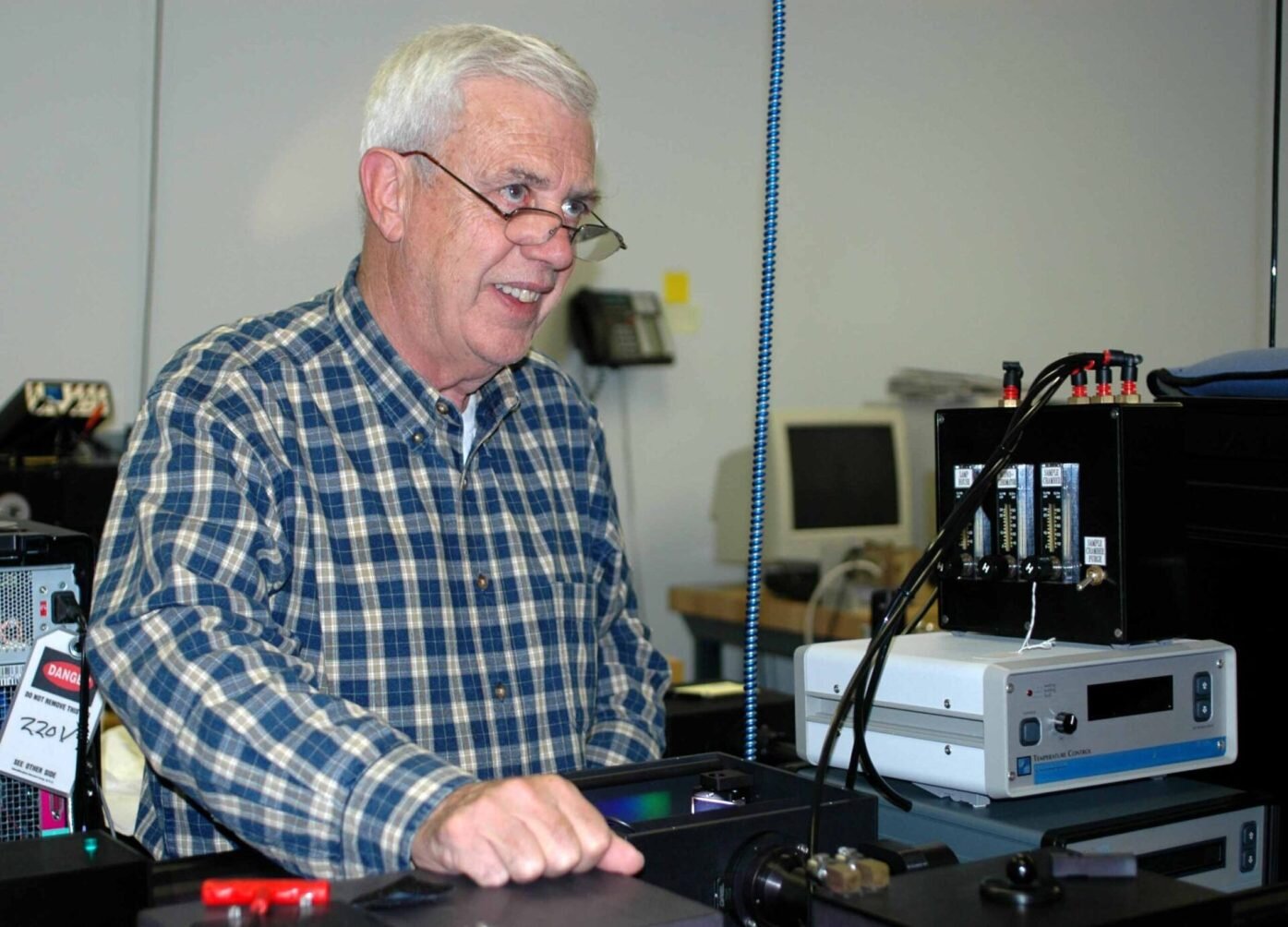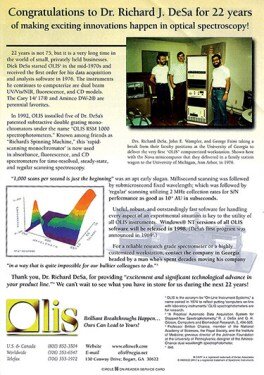The Main Principles Of Spectrophotometers
The Main Principles Of Spectrophotometers
Blog Article
3 Easy Facts About Circularly Polarized Luminescence Shown
Table of ContentsOur Uv/vis/nir PDFsThe smart Trick of Circularly Polarized Luminescence That Nobody is Talking AboutWhat Does Uv/vis Mean?Indicators on Circularly Polarized Luminescence You Need To KnowGetting The Circularly Polarized Luminescence To Work

Spectrophotometry is a tool that hinges on the quantitative analysis of molecules depending on how much light is soaked up by colored substances.
The Uv/vis Statements
A spectrophotometer is commonly utilized for the measurement of transmittance or reflectance of services, transparent or nontransparent solids, such as refined glass, or gases. Although numerous biochemicals are colored, as in, they take in visible light and therefore can be measured by colorimetric treatments, even colorless biochemicals can frequently be transformed to colored compounds ideal for chromogenic color-forming reactions to yield substances ideal for colorimetric analysis.: 65 However, they can likewise be created to determine the diffusivity on any of the listed light varieties that generally cover around 2002500 nm utilizing different controls and calibrations.
An example of an experiment in which spectrophotometry is used is the decision of the balance constant of an option. A certain chain reaction within an option might occur in a forward and reverse direction, where reactants form items and items break down into reactants. Eventually, this chemical response will reach a point of balance called an equilibrium point.
Circular Dichroism Fundamentals Explained
The quantity of light that passes through the solution is a sign of the concentration of certain chemicals that do not allow light to travel through. The absorption of light is because of the interaction of light with the electronic and vibrational modes of molecules. Each kind of molecule has a private set of energy levels connected with the makeup of its chemical bonds and nuclei and thus will soak up light of specific wavelengths, or energies, leading to distinct spectral properties.
They are widely used in lots of industries including semiconductors, laser and optical manufacturing, printing and forensic examination, as well as in labs for the study of chemical substances. Spectrophotometry is typically utilized in measurements of enzyme activities, determinations of protein concentrations, determinations of enzymatic kinetic constants, and measurements of ligand binding reactions.: 65 Eventually, a spectrophotometer is able to determine, depending on the control blog or calibration, what substances are present in a target and exactly how much through estimations of observed wavelengths.
Invented by Arnold O. Beckman in 1940 [], the spectrophotometer was produced with the help of his colleagues at his company National Technical Laboratories founded in 1935 which would end up being Beckman Instrument Company and eventually Beckman Coulter. This would come as an option to the previously created spectrophotometers which were unable to take in the ultraviolet properly.
All about Circular Dichroism
It would be found that this did not provide satisfying results, for that reason in Model B, there was a shift from a glass to a quartz prism which allowed for better absorbance outcomes - circular dichroism (https://dzone.com/users/5082179/olisclarity1.html). From there, Model C was born with a modification to the wavelength resolution which ended up having three units of it produced
It was produced from 1941 to 1976 where the price for it in 1941 was US$723 (far-UV devices were a choice at additional cost). In the words of Nobel chemistry laureate Bruce Merrifield, it was "probably the most essential instrument ever established towards the improvement of bioscience." Once it ended up being terminated in 1976, Hewlett-Packard created the first commercially offered diode-array spectrophotometer in 1979 understood as the HP 8450A. It irradiates the sample with polychromatic light which the sample soaks up depending upon its residential or commercial properties. It is transferred back by grating the photodiode range which detects the wavelength region of the spectrum. Ever since, the creation and execution of spectrophotometry devices has increased tremendously and has turned into one of the most ingenious instruments of our time.

Not known Facts About Circularly Polarized Luminescence
The grating can either be movable or fixed.
In such systems, the grating is fixed and the strength of each wavelength of light is determined by a different detector in the array. When making transmission measurements, the spectrophotometer quantitatively compares the portion of light that passes through a referral solution and a test solution, then electronically compares the intensities of the two signals and computes the portion of transmission of the sample compared to the referral requirement.

Report this page